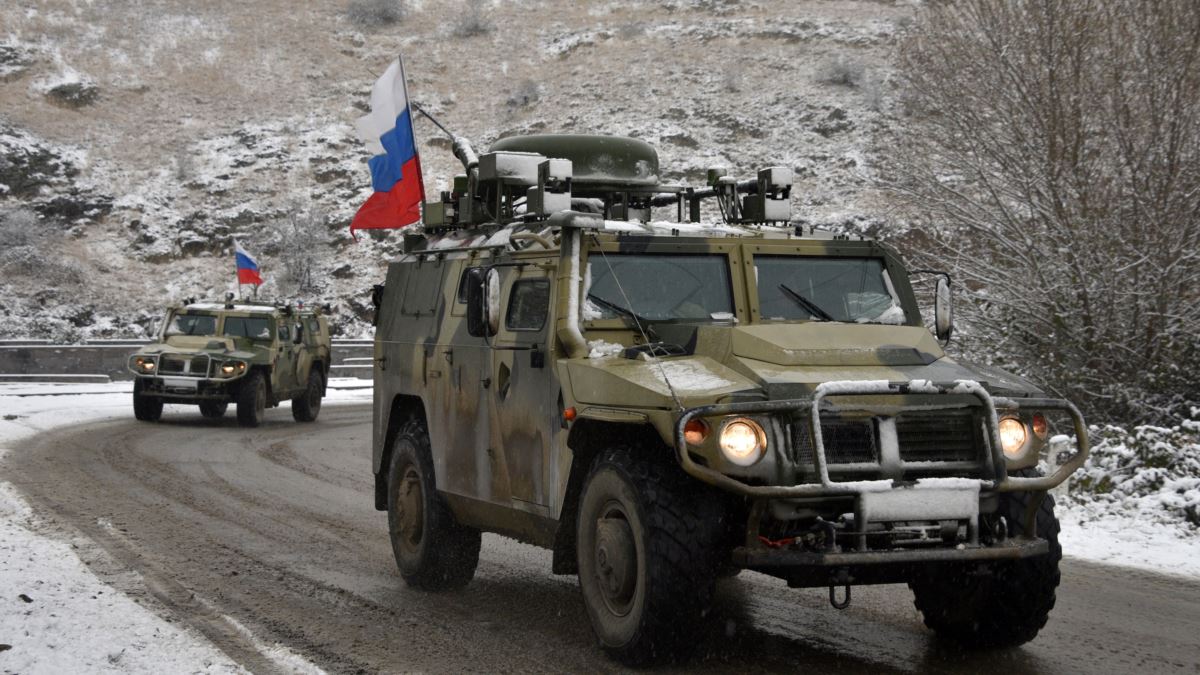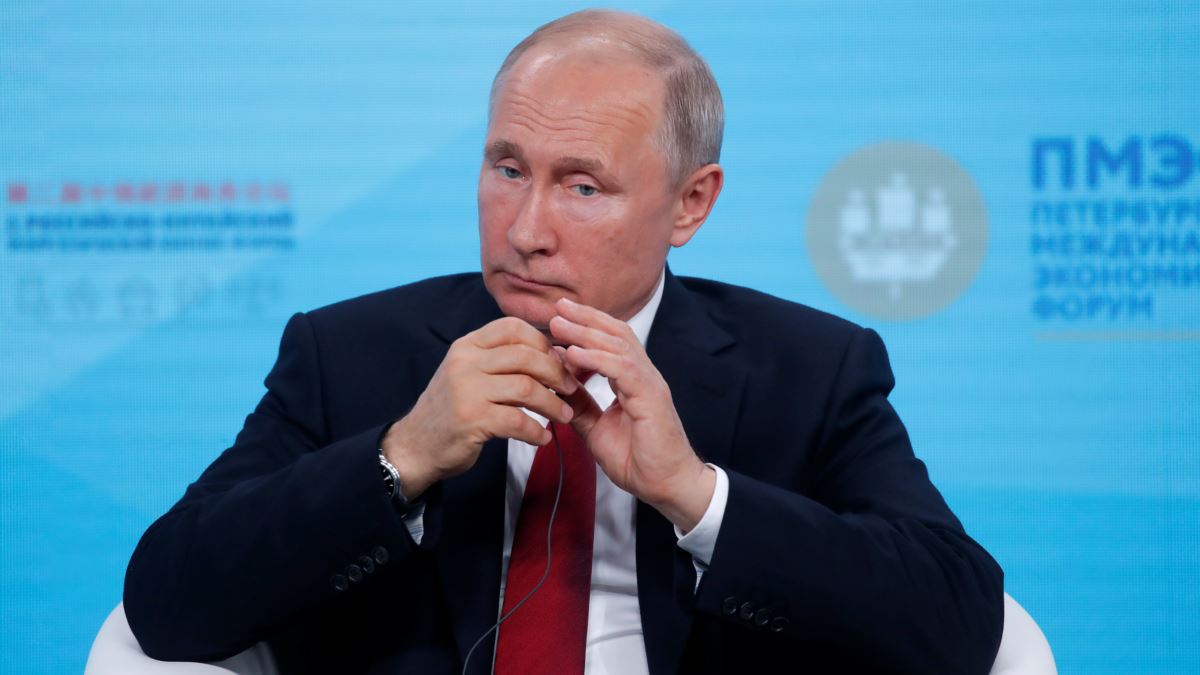When CC Metals & Alloys (CCMA) halted operations in July, some workers at the 70-year-old plant in western Kentucky expected to be back on the job by the New Year.
After all, the factory — which produces an alloy of iron and silicon for the boom-and-bust steel industry — has cut output and laid off employees during tough times over the decades, only to fire up idled furnaces and call workers back after a few months.
So for some employees of the plant owned by Ukrainian tycoon Ihor Kolomoyskiy and his business partner Hennadiy Boholyubov, it came as a shock when union leaders at CCMA informed them last month that most of the remaining workers would be laid off in December — even as the ferroalloy market shows signs of rebounding from a sharp COVID-19 slump.
“Most of the people that have been laid off in July ain’t even been looking for a job” because they assumed they would be back at the plant soon, one worker told RFE/RL by telephone, speaking on condition of anonymity because the new job cuts have not been publicly announced.
The clouded future of CCMA and its workers is another twist in the more than 10-year-old story of Kolomoyskiy’s business activities in the United States, where he and Boholyubov built a steel business worth hundreds of millions of dollars but lost it by 2017.
Word of the additional layoffs came months after the U.S. Justice Department accused Kolomoyskiy and Boholyubov of purchasing U.S. real estate and businesses with money embezzled from their Kyiv-based bank in 2008-16.
Ihor Kolomoyskiy is one of the richest and most influential magnates in Ukraine, where his assets include ferroalloy plants, energy producers, and media companies.
The allegation, which the two tycoons deny, stems from a continuing investigation by the FBI — a division of the Justice Department — into suspicions of money-laundering.
The current shutdown may be unprecedented, Stan Burkeen, a retired CCMA employee and union president whose father began working at the plant shortly after it opened in 1949 along the Tennessee River in Calvert City, Kentucky, told RFE/RL.
Boom And Bust
“It has always operated. Even when the price of metal was low, it would still run. They just might shut off one or two furnaces until the price went back up. But I have never known them to shut every line down,” said Burkeen, who retired in 2018 after a quarter-century on the job.
It has always operated. Even when the price of metal was low, it would still run. They just might shut off one or two furnaces until the price went back up. But I have never known them to shut every line down.
Now, the only thing buzzing on CCMA’s sprawling grounds is a Bitcoin-mining operation, employees say — a warehouse full of computers that are churning out cryptocurrency while the factory’s traditional production is idled.
When that might be restarted is unclear, current and former employees say, in part because the temporary collapse in ferroalloy demand prompted by the pandemic is not the only cloud hanging over CCMA.
Some workers suspect that the law enforcement pressure faced by Kolomoyskiy and two Miami-based U.S. associates who run CCMA, Mordechai Korf and Uriel Laber, may be the main reason for the apparent lack of plans to restart the plant. Financial problems at Kolomoyskiy’s other U.S. companies could potentially support such speculation.
“They are going to lay off more people and that is all we know,” the worker who spoke on condition of anonymity told RFE/RL on December 2. “The plant management don’t even know nothing. Miami is just keeping everything hush-hush.”
On August 4, the FBI raided the associates’ Miami headquarters and their real-estate management office in Cleveland, Ohio, where they own several properties.
Two days later, the Justice Department filed a civil lawsuit accusing Kolomoyskiy and Boholyubov of purchasing U.S. assets with money “misappropriated” from Kyiv-based PrivatBank, which was the tycoon’s main investment vehicle until it was nationalized in 2016.
The Justice Department claims the tycoons were assisted in these alleged actions by Korf and Laber, who oversee all their U.S. assets.
A spokesman for Korf and Laber declined to comment on any plans for layoffs at CCMA or other aspects of the plant’s future, including its sale.
Top Tycoon
Kolomoyskiy He has ties to President Volodymyr Zelenskiy and returned from self-imposed exile shortly after Zelenskiy’s election in 2019.
The U.S. Justice Department claims that Kolomoyskiy and Boholyubov fraudulently loaned themselves money from PrivatBank in 2008-16 and laundered it through shell companies before purchasing U.S. assets with the help of Korf and Laber.
The tycoons deny the accusations and claim they purchased the U.S. assets with about $2 billion they received from the sale of their Ukrainian steel business in the late 2000s. Korf and Laber also deny any wrongdoing.
The lawsuit filed by the Justice Department in August is seeking the forfeiture of two commercial buildings – one in Kentucky and one in Texas — that the tycoons purchased during their years-long U.S. buying spree.
Those proceedings have been delayed a few weeks as Korf, the 48-year-old CEO of CCMA and the real-estate assets, suffered an apparent seizure on November 16, according to court filings and Miami Beach Fire Department records obtained by RFE/RL.
The FBI is still conducting its investigation into the Ukrainian tycoons and their two U.S. associates, Special Agent Vicki Anderson-Gregg told RFE/RL on December 2. She declined to comment on whether law enforcement was looking into details about the purchase of CCMA.
Kolomoyskiy and Boholyubov bought CCMA for about $188 million in March 2011, when ferroalloy prices were near record highs.
Alloys To Crypto
CCMA is one of only three U.S. plants producing ferrosilicon, an alloy of iron and silicon that is mainly used in the production of steel to enhance its strength. The company’s three furnaces have an installed capacity of 100,000 metric tons.
The plant last year produced an estimated 70,000 tons, accounting for roughly 40 percent of U.S. ferrosilicon production and 20 percent of U.S. consumption, according to Kevin Fowkes, an industry expert at AlloyConsult.
CCMA had largely been a profitable business over the past several decades, current and former employees told RFE/RL, though it has faced production slowdowns and layoffs from time to time, most recently in 2015.
Current and former workers say they believe the Ukrainian tycoons mismanaged the plant by changing its business model and trying to run it from Miami rather than locally, as the previous owners had done.
Several years ago, the company shut the smallest of the three furnaces, which produced specialty alloys, the workers said. As a result, the plant began almost exclusively making the most standard ferrosilicon product.
“From my experience, that plant can’t make it on just that one product alone,” said Burkeen, who also alleged that the company “hasn’t run as smoothly” as it did before the tycoons bought it. However, industry analysts say U.S. demand for specialty alloys has been hurt in recent years by steel-plant closures, suggesting a possible practical reason for the decision.
Meanwhile, the owners turned to a new source of revenue to offset the weak alloy market — cryptocurrency. A few years ago, the warehouse that had stored the specialty alloys was revamped and filled with hundreds if not thousands of computers to mine cryptocurrency, current and former employees say.
“They were bringing [computers] in by the truckload,” an employee of the plant told RFE/RL on condition of anonymity because he is not authorized to speak about plant activities.
There are about 170 families, give or take, that depend on that place and that is not mentioning the truck-driving families and the warehouse people. It is a very important source of jobs in this area.
The cryptocurrency operation is run independently of the plant and has not been affected by the shutdown, the workers said.
A spokesperson for Korf and Laber told RFE/RL in July that CCMA invited a third party to host a data center on its property focusing on artificial intelligence (AI) and blockchain as a way to diversify profits. The spokesperson did not disclose the third party nor the financial details of the hosting agreement.
“Both AI and blockchain are energy-intensive industries and are expected to grow exponentially to a $20 billion market in the next decade. Based on the success of the initial pilot program we may increase this business line. Having multiple revenue streams is prudent for CCMA,” the spokesperson said in a reply to RFE/RL.
Blockchain is a technology used to process cryptocurrency transactions.
The cryptocurrency data center on the grounds of CCMA is just one of at least five that have popped up in the Tennessee Valley in recent years thanks to the region’s abundant supply of cheap power. Cryptocurrency “mining” is an energy-intensive business and requires low pricing to be profitable.
170 Families
This year, as the coronavirus devastated the U.S. economy, CCMA announced in late June that it would shut all production and lay off more than 80 plant workers — about 77 percent of the workforce — on July 1 for an “unforeseeable period of time.”
The company said that the government shared blame for the shutdown, accusing it of allowing a flood of cheap imports that pushed prices lower.
Since reaching a low point in July, ferrosilicon prices have slowly risen over the past few months.
Amy Bennett, principal consultant at Fastmarkets, a metals industry pricing and news service, told the International Ferroalloys Conference on November 9 that she expected ferroalloy prices to pick up in 2021 as steel demand recovers from the pandemic.
The rosier outlook is leaving some workers questioning why CCMA is laying people off rather than calling them back. The long shutdown has fueled suspicions among workers and others in Calvert City that the tycoons may be seeking, for a second time, to sell the plant.
In 2017, Kolomoyskiy sought to sell CCMA to a Russian company in order to stave off the loss of his U.S. steel business, which filed for bankruptcy the previous year, an RFE/RL investigation showed.
But during a required interagency review, the Justice Department raised questions about where the proceeds would end up, people familiar with the issue told RFE/RL. The owners declined to answer those questions, they said, and the deal was never approved.
If the Ukrainian tycoons are aiming to sell, Burkeen said he hopes that the U.S. government will allow it and that a new owner will restart production.
“There are about 170 families, give or take, that depend on that place and that is not mentioning the truck-driving families and the warehouse people. It is a very important source of jobs in this area,” he said.
This post was originally published on Radio Free.





























